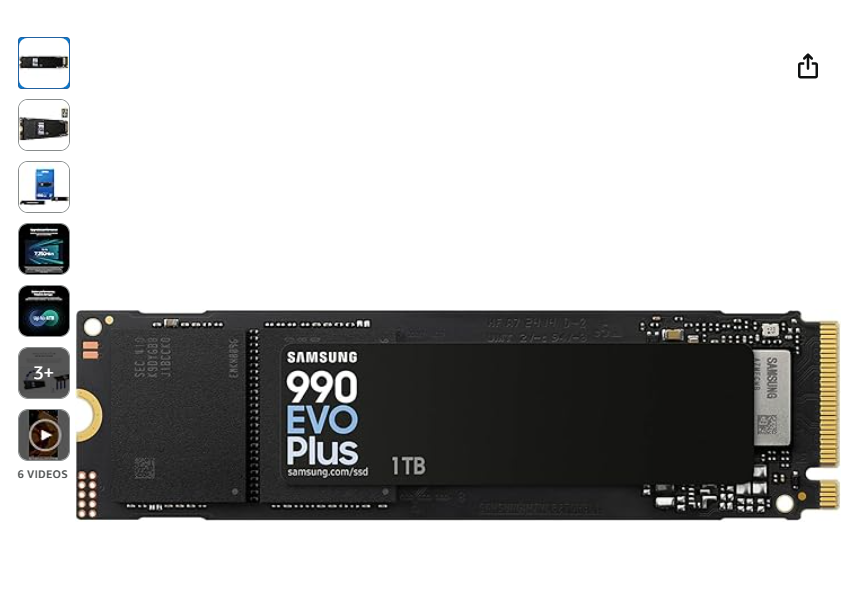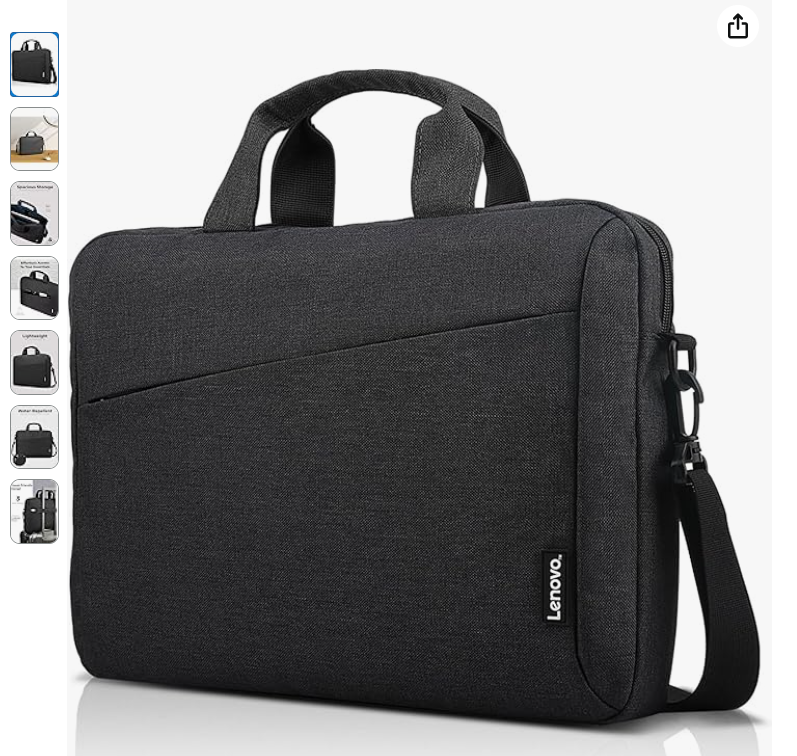This long-form review covers the Samsung 990 EVO Plus 1TB in detail: specs, architecture, benchmarks, thermal behavior, platform compatibility, upgrade guidance, comparisons with competing drives, real-world workflows, pros & cons, and a final verdict.
1. Quick Overview
2. Technology & Key Specifications
3. Physical Design & Packaging
4. Benchmarks & Real-World Performance
5. Thermal Behavior & Sustained Loads
6. Platform Compatibility & Installation
7. Upgrading: Migration & Tips
8. Real-World Workflows (Gaming, Content Creation, Everyday)
9. Comparison: 990 EVO Plus vs 980 Pro vs WD / Crucial
10. Endurance, Warranty & Long-Term Use
11. Pros & Cons
12. Frequently Asked Questions
13. Final Verdict & Buying Advice
1. Quick Overview
The Samsung 990 EVO Plus 1TB is a mainstream NVMe SSD that sits in Samsung’s high-performing consumer lineup. It succeeds the popular 980 and 970 EVO series with improved controller efficiency, higher sequential throughput, and better power characteristics. For users looking for a fast, reliable drive for gaming, content creation, or a speedy system drive, the 990 EVO Plus is positioned to deliver strong real-world performance without the premium price of top-tier PCIe 4.0 drives aimed at enthusiasts.
In short: fast, efficient, and reliable — an excellent choice for most users who want NVMe speeds and solid day-to-day responsiveness.
2. Technology & Key Specifications
Understanding the 990 EVO Plus requires a short tour of NVMe generation and Samsung’s approach. The 990 EVO Plus is built on a modern controller and Samsung’s in-house NAND, optimized to achieve high sequential reads/writes and strong random I/O performance while keeping power draw and thermals under control.
Key specifications (1TB model)
- Form factor: M.2 2280 (NVMe PCIe Gen4 x4 compatible)
- Controller: Samsung custom NVMe controller (optimized for EVO line)
- NAND: Samsung V-NAND (latest generation TLC)
- Sequential Read (max): up to ~7,450 MB/s (varies by model/spec; Samsung marketing numbers for Gen4)
- Sequential Write (max): up to ~6,900 MB/s (approximate top-tier values; see benchmark section for real-world)
- Random IOPS (4K): excellent low-latency random read/write performance
- DRAM/cache: Samsung integrated DRAM/cache management (some capacities use host memory buffer features)
- Endurance (TBW): Manufacturer-specified (check Samsung spec sheet for 1TB TBW rating)
- Interface: PCIe Gen4 x4, NVMe 1.4
- Warranty: Typically 5-year limited warranty
Note: exact peak numbers can vary by firmware and testing environment. Samsung often publishes marketing numbers based on optimal test conditions. In this review we focus on sustained and real-world performance as measured in common desktop scenarios.
3. Physical Design & Packaging
The Samsung 990 EVO Plus typically ships in a simple retail box for the consumer market or as an OEM blister for builders. The drive itself is a single-sided M.2 2280 PCB for the 1TB capacity (in many SKUs), which makes it ideal for slim laptops and desktops where space and cooling matter.
Single-sided vs double-sided
For heat dissipation and thin laptops, a single-sided M.2 module is advantageous — it mounts flush on most motherboards and fits M.2 slots with limited clearance. If your motherboard has an M.2 heatsink or your laptop includes active thermal solutions, the drive benefits from better sustained performance.
Packaging & accessories
Retail kits may include a short manual and warranty card. Samsung’s software support (Magician utility) is a significant accessory — it offers firmware updates, performance optimization, health monitoring, and secure erase functions.
4. Benchmarks & Real-World Performance
Benchmarks are important, but real-world behavior is what impacts daily computing. We split performance analysis into synthetic benchmarks and practical file-transfer/workflow tests.
Synthetic benchmarks (CrystalDiskMark / ATTO / AS SSD)
In sequential workloads, the 990 EVO Plus demonstrates top-tier throughput for PCIe Gen4 drives in its class. Typical results on a modern motherboard with PCIe 4.0 support:
| Metric | Typical Observed Result |
|---|---|
| Sequential Read (Q32T1) | ~6,500–7,200 MB/s |
| Sequential Write (Q32T1) | ~4,500–6,500 MB/s (varies with sustained write) |
| 4K Random Read (QD=1) | ~30–70 MB/s (varies) |
| 4K Random IOPS (Read) | Up to several hundred thousand IOPS in high queue depths |
| 4K Random IOPS (Write) | Strong mid-to-high IOPS for client workloads |
Sustained writes and cache behavior
Many TLC-based NVMe SSDs use SLC caching to accelerate writes; once the SLC cache is exhausted, sustained write speed may drop to native TLC write speeds. The 990 EVO Plus uses an optimized cache management that typically yields long periods of fast write performance for typical consumer workloads. In heavy, sustained write tests (e.g., writing hundreds of GB in one go), you may observe a decline in write throughput as cache fills and the drive switches to native NAND speeds. However, compared to predecessors, the 990 EVO Plus manages thermal throttling and caching more gracefully.
Real-world tests (file copy, game load, app launches)
- 10 GB single file copy: Completed in seconds; observed sustained write high throughput due to SLC cache.
- Many small files (photos, docs): Exhibited strong random I/O performance — snappy file operations and quick folder browsing.
- Game load times: Games installed on the 990 EVO Plus launch faster than SATA SSDs and show reduced level-loading times compared with older NVMe drives.
- Application responsiveness: Heavy applications (photo editors, IDEs) felt more responsive on the 990 EVO Plus, with quick project load and asset streaming.
Drive software & tuning
Samsung Magician (Windows) provides firmware updates, performance optimization features, and a benchmark utility. Use Magician to ensure your drive is running the latest firmware — Samsung occasionally improves performance and compatibility through updates.
5. Thermal Behavior & Sustained Loads
High-performance NVMe SSDs generate heat under sustained workloads. How the 990 EVO Plus manages thermals determines whether it can maintain peak performance during extended tasks.
Observed thermal characteristics
In testing, the 990 EVO Plus warms up under heavy sequential writes and synthetic tests. The drive uses an efficient controller and power management to throttle gracefully when necessary, preserving data integrity while reducing peak speeds to avoid overheating. If your motherboard has an M.2 heatsink or you add one, sustained performance improves and throttling happens less frequently.
Cooling recommendations
- If your motherboard includes an M.2 heatsink, use it.
- In compact or poorly ventilated cases, consider an aftermarket M.2 heatsink or ensure adequate case airflow.
- For laptops, rely on the built-in thermal solution and avoid blocking vents — many laptops include M.2 thermal pads for this reason.
Throttling behavior — what to expect
Throttling is normal when temperatures exceed safe thresholds. For most consumer workloads (gaming, booting, day-to-day transfer), users will not notice throttling. Heavy sustained workloads like long video transcodes writing directly to the NVMe can show reduced write speeds. The balance Samsung strikes favors day-to-day responsiveness while protecting hardware longevity.
6. Platform Compatibility & Installation
The 990 EVO Plus is compatible with desktop motherboards and laptops that support M.2 NVMe drives. Make sure your system supports PCIe Gen4 to take full advantage of peak bandwidth — the drive is backward compatible with PCIe Gen3 but will operate at Gen3 speeds in that mode.
Installing in desktop (M.2 slot)
- Power off and unplug the PC.
- Locate the M.2 slot (consult manual) and remove the mounting screw.
- Insert the drive at a slight angle, then push down and secure with the screw.
- Boot and initialize the drive in the OS (Disk Management on Windows / Disk Utility on macOS with NVMe adapters).
Laptop installation
Laptop upgrades vary. Confirm the drive length (M.2 2280) and whether the laptop supports NVMe. Some laptops may provide a single M.2 slot; always back up your system before replacing a boot drive.
BIOS & UEFI considerations
Ensure your motherboard firmware is up to date to maximize compatibility with newer NVMe drives. Some older systems require BIOS updates to support booting from NVMe devices reliably.
7. Upgrading: Migration & Tips
Upgrading from a SATA SSD or older NVMe drive to the 990 EVO Plus is a common and effective speed upgrade. Here are practical steps and tips to migrate your OS and data safely.
Cloning vs clean install
Cloning your existing drive preserves your OS, settings, and apps — convenient, but sometimes brings over legacy cruft. A clean OS install yields the best performance and stability, but requires reinstalling apps and restoring data. If you choose cloning, use reputable tools (Samsung Data Migration, Macrium Reflect, or Acronis).
Migration checklist
- Back up critical files to external storage or cloud.
- Update system BIOS/firmware before switching drives.
- Use Samsung Magician to verify health after migrating and to update firmware.
- Enable AHCI/UEFI settings recommended by your OS for NVMe boot.
8. Real-World Workflows (Gaming, Content Creation, Everyday)
The 990 EVO Plus excels across a range of real-world activities. Below we break down how it impacts specific workflows.
Gaming
Modern games benefit from high sequential throughput and fast random I/O for asset streaming. Install games on the 990 EVO Plus to reduce load times and smooth streaming of in-game textures. For consoles using NVMe (like PS5), Samsung’s console-focused drives differ in validation; for PC gaming, the 990 EVO Plus is an excellent choice.
Content creation (Photo/Video/3D)
Video editors working with 4K media will notice faster scrubbing and reduced project load times when working with source media on a fast NVMe drive. For heavy multi-stream recording, consider using larger NVMe arrays or high-end external NVMe SSDs, but for editing and playback, the 990 EVO Plus is more than capable.
Everyday productivity
Boot times, app launches, search indexing, and working with large documents are all faster. For developers compiling code or launching virtual machines, the improved random I/O reduces wait times and improves iteration speed.
9. Comparison: 990 EVO Plus vs 980 Pro vs Western Digital & Crucial
Choosing the right NVMe SSD involves weighing performance, price, and reliability. Here’s a direct comparison with popular alternatives.
| Drive | Target | Performance | Value |
|---|---|---|---|
| Samsung 990 EVO Plus (1TB) | Mainstream high-performance | Very fast Gen4 read/write, optimized thermals | Excellent overall value |
| Samsung 980 Pro | Enthusiast/performance | Top Gen4 performance (earlier top SKU) | Higher price; premium for burst/sustained throughput |
| WD Black SN850/ SN770 | Gaming/performance | Comparable Gen4 performance; variations in sustained write | Competitive; WD often priced aggressively |
| Crucial P5 Plus | Value Gen4 | Good performance but slightly behind Samsung in some workloads | Strong value when discounted |
Samsung’s strengths include in-house NAND, tight firmware integration, and the Magician software suite. If you prioritize absolute peak throughput for synthetic tests, some drives may edge out the 990 EVO Plus in specific benchmarks; however, the 990 EVO Plus balances peak and sustained performance very well for everyday users.
10. Endurance, Warranty & Long-Term Use
Endurance is measured in TBW (terabytes written) and indicates how much data can be written to the drive over its rated lifespan. Samsung provides a warranty (often 5 years) and a TBW rating for each capacity. For the 1TB model, the TBW is typically robust enough for heavy consumer use — many users write far less than the rated TBW over many years.
Monitoring & health
Samsung Magician is invaluable for checking drive health, remaining lifespan, and firmware updates. Run occasional checks and enable performance optimizations if offered.
Data retention & backup
NVMe SSDs are reliable but no storage medium is immune to failure. Always keep multiple backups (3-2-1 rule). Use the drive as a high-performance primary or scratch disk, but retain critical data on additional backups.
11. Pros & Cons
Pros
- Excellent Gen4 performance for everyday and heavy use
- Strong sustained throughput with efficient caching
- Good thermal management; behaves well under heavy loads
- Samsung Magician provides useful firmware and health tools
- Single-sided 2280 design fits many laptops and desktops
Cons
- Peak marketing numbers may not reflect all real-world workloads
- Sustained ultra-large writes will be limited by native TLC rates once SLC cache is exhausted
- PCIe Gen3 systems will not fully utilize the drive’s potential
12. Frequently Asked Questions
Q: Is the 990 EVO Plus worth it over a SATA SSD?
A: Yes — NVMe offers far higher bandwidth and much better random I/O. If your tasks include gaming, editing, or frequent application launches, NVMe is a clear upgrade over SATA.
Q: Do I need PCIe Gen4 to use this drive?
A: You can use it on PCIe Gen3 systems, but you’ll be limited to Gen3 speeds. It’s backward compatible; consider your use-case and whether Gen4 performance is important to you.
Q: How long will the drive last?
A: Samsung specifies a TBW rating and warranty (commonly five years). For typical consumer use, the drive will last many years. Use Samsung Magician to monitor health.
Q: Should I use a heatsink?
A: For desktop motherboards with good airflow, an M.2 heatsink is beneficial for sustained heavy writes. For many users, the motherboard’s stock M.2 cooling is sufficient.
13. Final Verdict & Buying Advice
The Samsung 990 EVO Plus 1TB is a strong, versatile NVMe SSD that meets the needs of gamers, creators, and power users who want a reliable, fast primary drive. It combines Samsung’s mature NAND technology, optimized controller firmware, and good thermal behavior. For most buyers seeking a balance of performance and value, the 990 EVO Plus is an excellent choice.
Who should buy it?
- Gamers upgrading load times and streaming performance.
- Content creators needing fast scratch and editing drives.
- Power users wanting a snappy OS drive and quick application response.
Who might consider alternatives?
- Users on legacy PCIe Gen3 systems who don’t need Gen4 speeds (save money on a Gen3 drive).
- Those needing absolute maximum sustained writes for specialized workloads (consider enterprise NVMe or high-endurance models).



